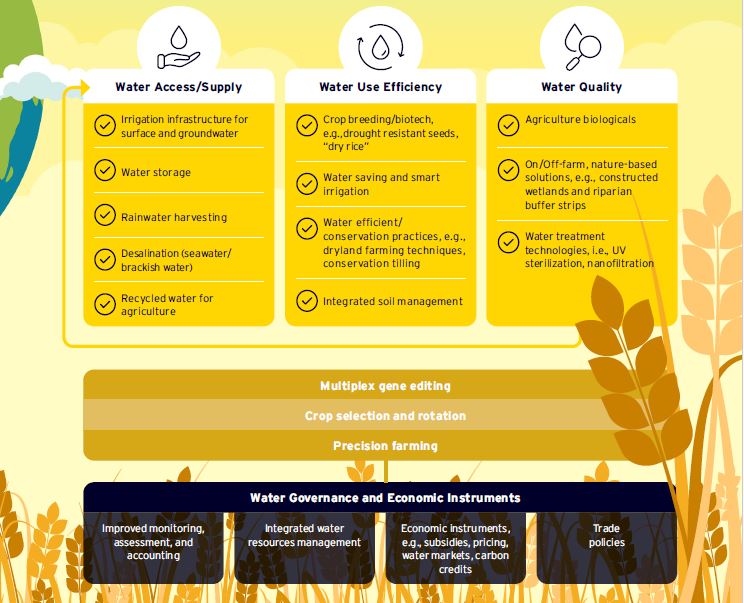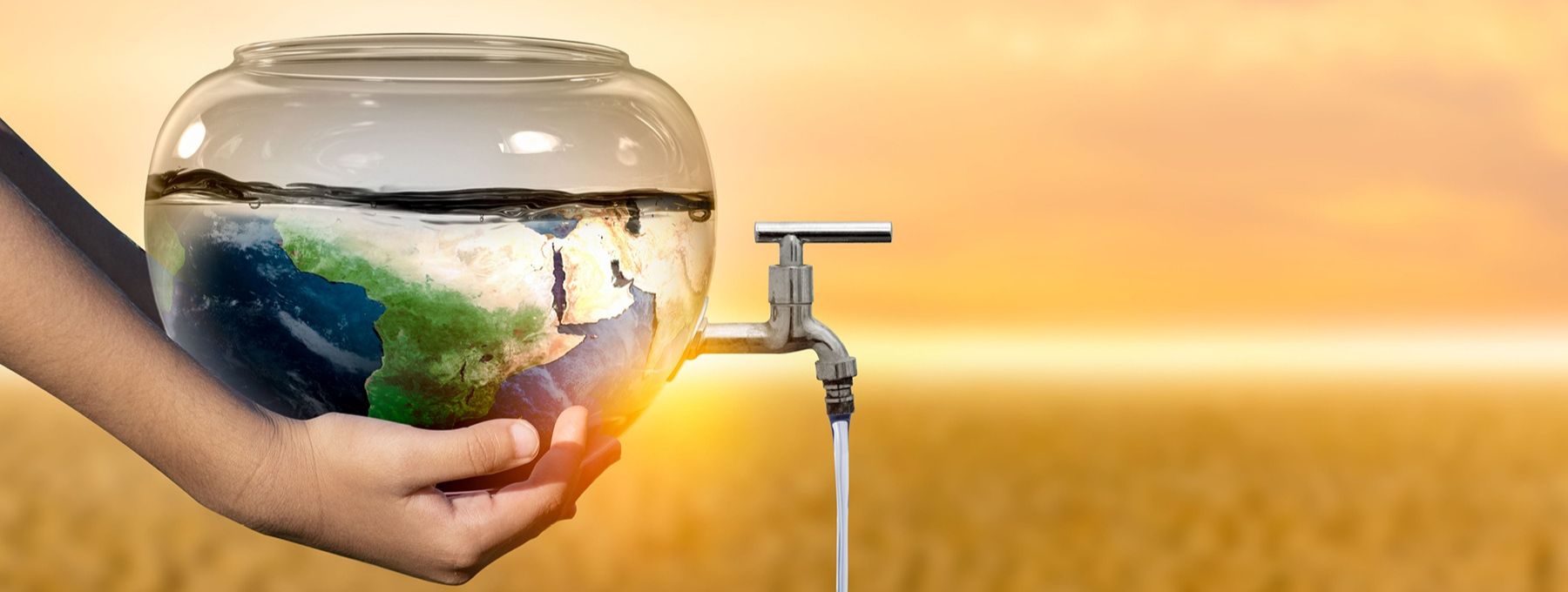
We take things for granted every day. In the morning it’s easy to take the coffee cart on the sidewalk outside the office for granted, despite it allowing us to start day with a warm cup of caffeine and a buttered roll. At 7a.m. there are likely few thoughts around the logistics necessary for the cart to be fully stocked and in the right location each morning, let alone the details around where the flour and coffee beans were grown. Being able to easily get breakfast is all the matters.
In the Citi GPS Sustainability series, we have written extensively about climate change. Specifically, in Food and Climate Change: Creating Sustainable Food Systems for a Net Zero Future, we discussed the impact of food production on greenhouse gas emissions, and in Food Security: Tackling the Current Crisis and Building Future Resilience, we explored how climate change can heighten the ever-present global threat of food insecurity.
But the big issue we may be overlooking is the relationship between food, water, and climate change. What happens if changes in climate affect the availability of water resources? And with water already stressed in many regions, could climate change lead to pressures on food production? In our new report, we investigate the connections between water, food, and climate change — known as the water, food, and climate nexus — with particular attention given to the impacts that too much or too little water could have on food production.
Staple crops — rice, wheat, maize (corn), and soybeans — make up around two-thirds of the world’s food calories, making them critically important to consumers worldwide. Global production of these staple crops is highly concentrated in regions known as “breadbaskets,” and at least 72% of the global production of each of these crops is found in just five regions. Any changes to the growing conditions in these regions would have huge global consequences.
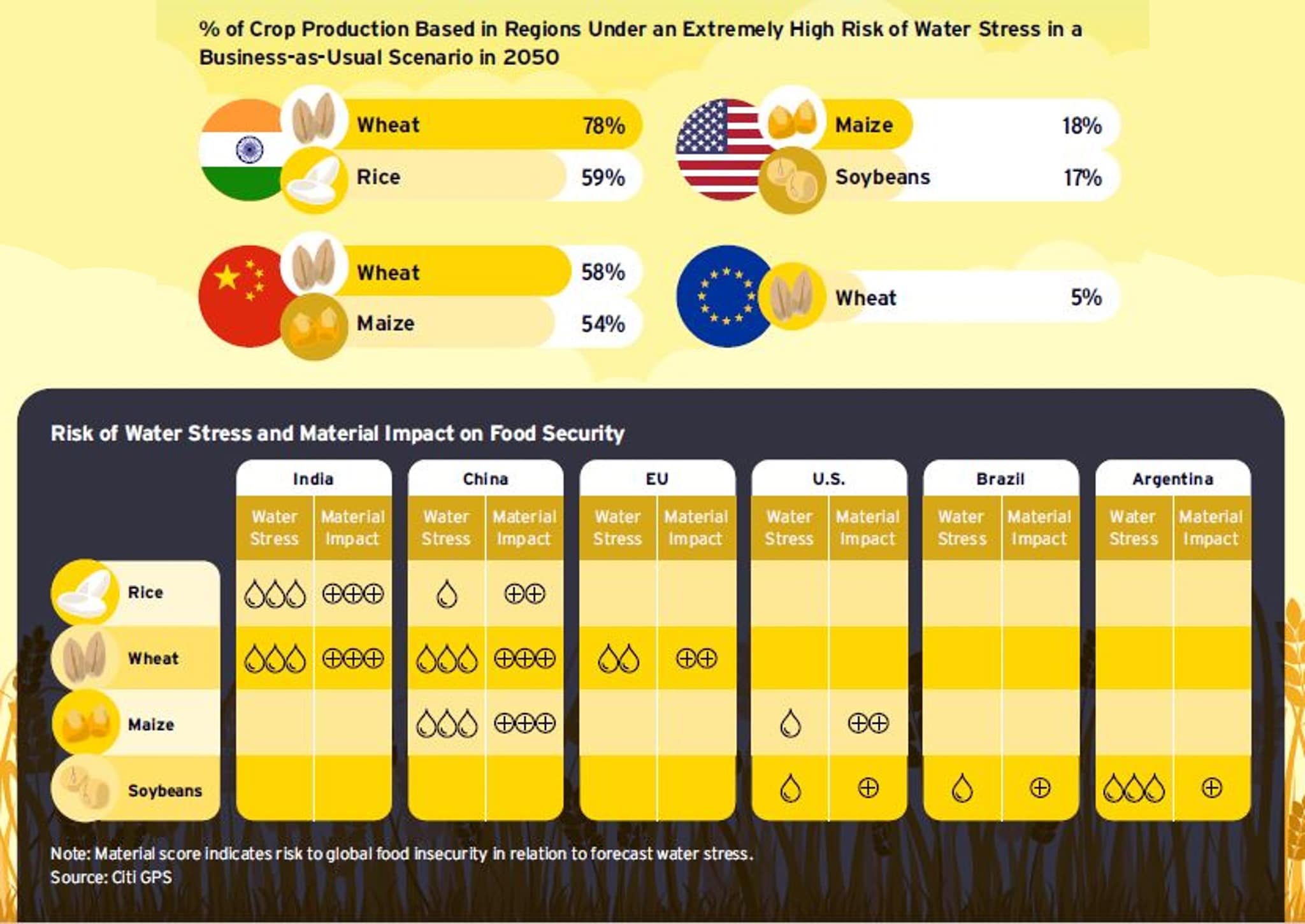
In our analysis, we looked at the water stress levels in these five regions and found that in a “business-as-usual” climate change scenario, many countries have an extremely high risk of water stress in 2050. India is of particular concern, with over 70% of rice and 78% of wheat currently produced in areas that could have high-to-significant water stress in 2050. We then looked at the materiality of staple food production in each country, including whether the country is a large producer or exporter of these staple crops and the size of the country’s population.
We found that a failure, or even a reduction, in crop yields in any of these countries would have a material impact on global food security, with cereal prices rising by 1% to 28% and an additional 1 million to 180 million people potentially going hungry. Moreover, nearly $3 trillion of business revenues of publicly listed companies could be affected.
The good news is there are plenty of technological solutions that can help us avoid this dismal scenario, but good governance will also be important. We explore these opportunities in the report.
The food, water, climate change nexus is critical and should not be taken for granted.
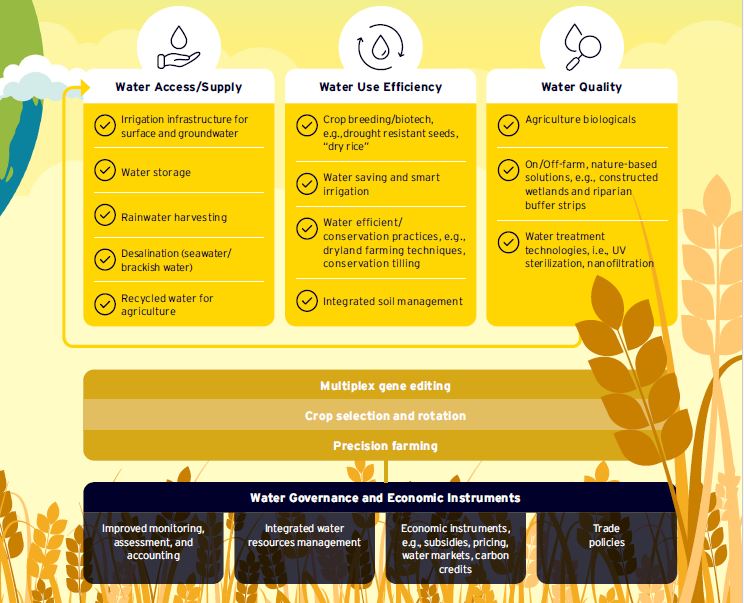
Agricultural production is highly susceptible to changes in climate. It is also reliant on the availability of water resources, which are already stressed in many regions important for food production. These water pressure will increase with climate chnage.
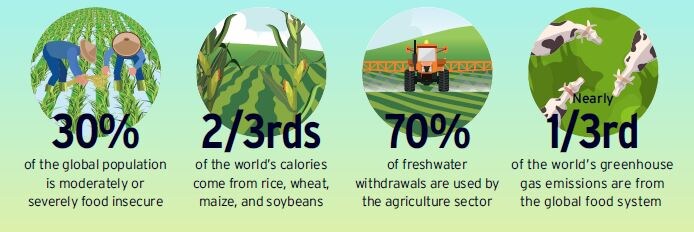
We analyzed crop-producing regions in key "breadbaskets" and found that large portions of food production occur in areas forecast to face varying levels of water stress risk due to climate change. Including all levels of water stress, we also assign a "materiality" rating to assess the impact of global food security from a decline in a region's food production. This rating is based on crop production levels, export levels, population size, and other water indicators such as drought.
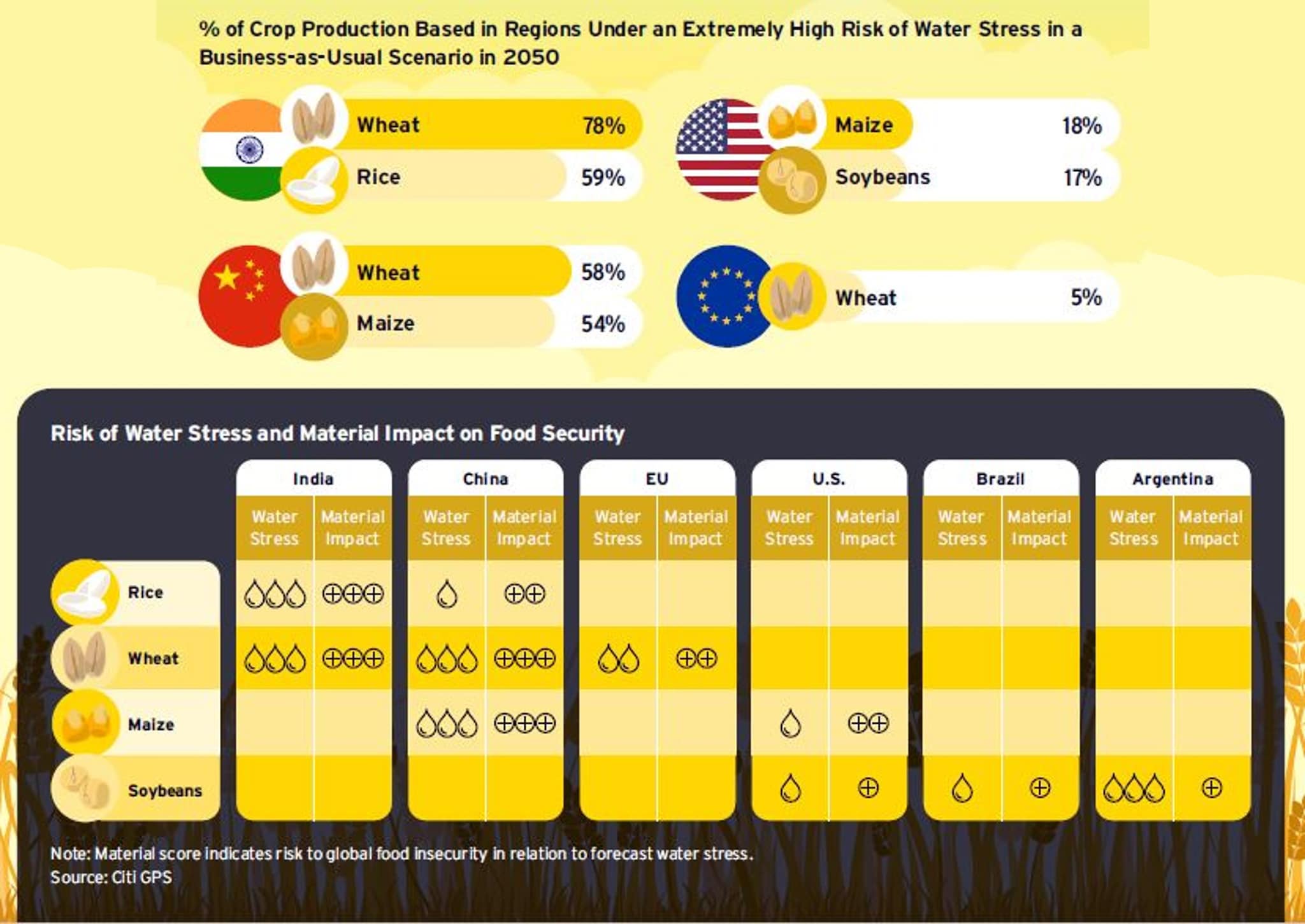
Doing nothing to prevent a potential water and food crisis will not only impact people's health and nutrition, but could also cause economic damage and political instability.

To help reduce and adapt to the impact of climate change on water resources and food production, we highlight both innovation-based solutions and improvements to water governance.
